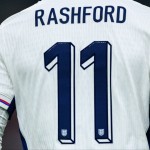IN the early nineties, English football went through a period of self-loathing. In part it was cultural. The mood was of renewal with the Premier League and the influence of satellite television presenting a glitzy future just as the game was beginning to come to terms with the three great tragedies of the mid-to-late eighties.
But it was also tactical. England were pitiful at Euro 92 and failed even to qualify for the 1994 World Cup. Although Manchester United won the Cup-Winners Cup in 1991, the first season back after the Heysel ban, their 4-0 defeat at Barcelona in 1994 rammed home the message: the rest of the world had moved on during the period of exile and left English football behind.
Much of the blame, understandably, was directed at the theories of direct football that had underpinned Graham Taylor’s career and, far more damagingly, the coaching given to promising young players at the FA’s Centre of Excellence at Lilleshall. Taylor’s instincts were always to the sort of football that had brought him success at Lincoln, Watford and Aston Villa, but he at least recognised its shortcomings against technically proficient opposition.
Jamie Carragher: “My only worry is, are Tottenham going to do a Liverpool 2005, a Chelsea 2012 at Bayern Munich, where they’re not a great team or in great form but they just find a way and things are happening for them. It could be that special year for them, it could be.”
— Anfield HQ (@AnfieldHQ) May 27, 2019
The FA’s technical director Charles Hughes, meanwhile, took the theories of the pioneering statistician Charles Reep and transformed them into a governing philosophy that insisted that the most efficient route to goal was in five passes or fewer.
As the journalist and historian Brian Glanville put it, that belief “poisoned the wells” of English football for a generation, conditioning not just the development of players but also of coaches who would then transfer those ideas to the players in their charge. As a result, what became prized was less technical ability or imagination than discipline and work rate.
By the mid-nineties, English football was in full revolt. Anything that smacked of the long ball or of emphasising muscularity was rejected. Which in one way made sense, but it also meant denying what had made English club football so effective in the late seventies and early eighties when Liverpool, Nottingham Forest and Aston Villa between them won seven European Cups in eight years.
Those teams had technical ability and, with their pressing (not that anybody called it that then) were tactically advanced. But they were also powerful, aggressive, quick teams – and it was that that terrified European opponents, as the German title of Raphael Honigstein’s book about English football, Harder, Faster, Better, Stronger, makes clear.
Wednesday
Chelsea vs Arsenal
Europa League finalSaturday
Tottenham vs Liverpool
Champions League finalThis. Week. pic.twitter.com/cYptLkHelf
— Football on BT Sport (@btsportfootball) May 27, 2019
For years English football hunted a solution abroad. We should be more like Ajax! We need to build our own Clairefontaine! Spain: we should follow the Spanish model! Reboot like the Germans! Somehow, from all that, came the FA’s England DNA programme unveiled in December 2014 which, if recent results in various youth tournaments, most notably success at the last Under-20 World Cup, are anything to go by, is beginning to bear fruit.
But what has been notable recently is how the pace and aggression that characterised the best of the English game 40 years ago is beginning to return, less with Manchester City, who relentless as they are, remain fundamentally a team built on the Guardiola virtues of position and possession, than with Tottenham and Liverpool.
Liverpool have been bullying European opponents for a while. They overpowered Borussia Dortmund and Villarreal in the Europa League in 2016 and Roma last season even before overwhelming Bayern and Barca this time round. Spurs too gave Juventus a chasing for long spells last season before going out thanks to a 10-minute brain-freeze in each leg. This season they ran the legs off Dortmund before, eventually, outlasting Ajax.
Pochettino: “The final? Liverpool are the favourites because they have invested a lot of money, they have signed a goalkeeper and a £75million defender. Liverpool’s plan is to win the Champions League and Premier League. Tottenham’s plan is to make the best season in history.”
— Anfield Edition (@AnfieldEdition) May 24, 2019
That’s not coincidence. It’s not just a by-product of the Premier League still being the most intense league in Europe. It’s conscious policy from both clubs. Klopp has spoken of how inspired he was growing up by Bob Paisley’s Liverpool while Pochettino’s evangelism for old-school English values is perhaps even more surprising. In a recent interview with El Pais, he spoke with great enthusiasm of having watched the 1975 European Cup semi-final between an ageing Leeds United and the Barcelona of Johan Cruyff and Johan Neeskens.
It was the struggle, the fight, he said, that excited him in football. It may seem counter-intuitive, but this was somebody who learned at the knee of Marcelo Bielsa looking to Billy Bremner, John Giles and Eddie Gray for inspiration.
The all-English Champions League final in Madrid is a celebration of English values; the oddity is that it has taken an Argentinian and a German (plus a host of foreign players) to remind up what we used to be good at.



